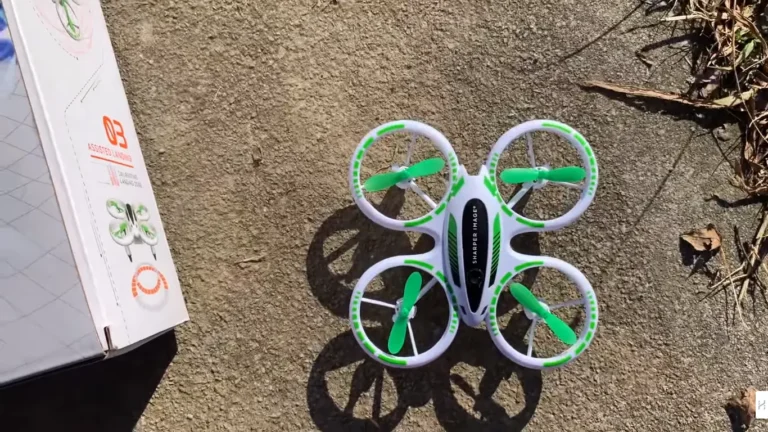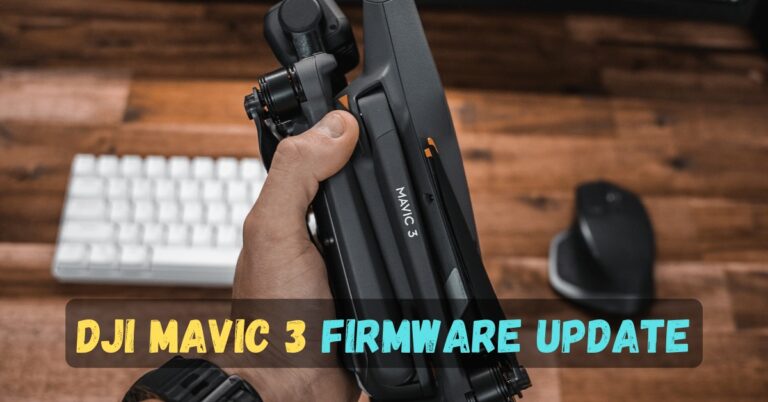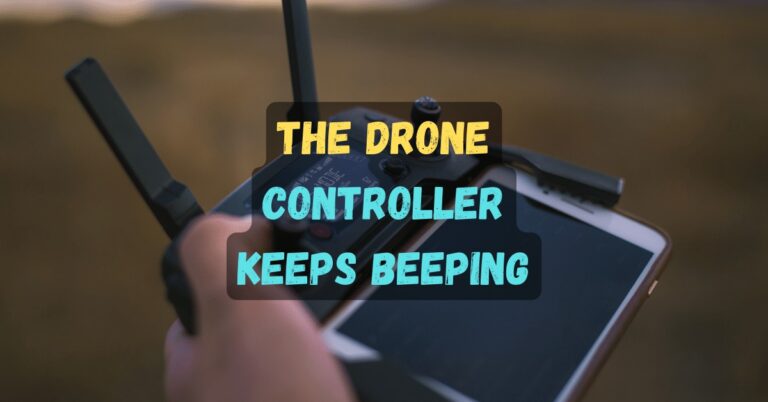Can You Fly Your Drone in Hot Weather?

Hot weather can be a joy for drone enthusiasts, providing long days and clear skies perfect for capturing stunning aerial footage. But with the summer months fast approaching, it’s essential to consider the impact of high temperatures on your drone’s performance and safety.
Can You Fly Your Drone in Hot Weather?
Yes, you can fly your drone in hot weather, but taking precautions to protect your equipment is essential. High temperatures can affect your drone’s battery life, performance, and safety.
Be sure to avoid flying in direct sunlight, monitor your battery temperature, and take breaks to allow your drone to cool down.
In this article, we’ll explore the risks of flying a drone in hot weather and the precautions you can take to protect your equipment and ensure a successful flight. Whether you’re a seasoned pilot or a beginner, read on to learn how to fly your drone in the heat safely.
What Temperature Limits Do You Need to Consider When Flying a Drone?
Understanding the temperature limits is essential when flying your drone in hot weather. Here’s what you need to know:
Operating Temperature Range:
Drones typically have an operating temperature range listed in the user manual, which will inform you of the maximum and minimum temperatures for safe operation. Make sure to check this range before flying your drone.
Battery Temperature:
Your drone’s battery can be sensitive to temperature changes, and high temperatures can cause your battery to degrade faster or even fail. Avoid flying your drone if the battery temperature exceeds the recommended range.
Environmental Factors:
It’s not just the temperature of your drone and its battery that can affect performance; heat can also cause air density changes, impacting your drone’s lift and stability. When planning your flight, consider other environmental factors such as wind, humidity, and air pressure.
These temperature limits can ensure a safe and successful flight in hot weather. Remember to monitor your equipment and environmental conditions and prioritize safety carefully.
How Does Heat Affect Your Drone’s Performance?
When flying a drone in hot weather, it’s essential to understand how heat can impact your drone’s performance. Here’s what you need to know:
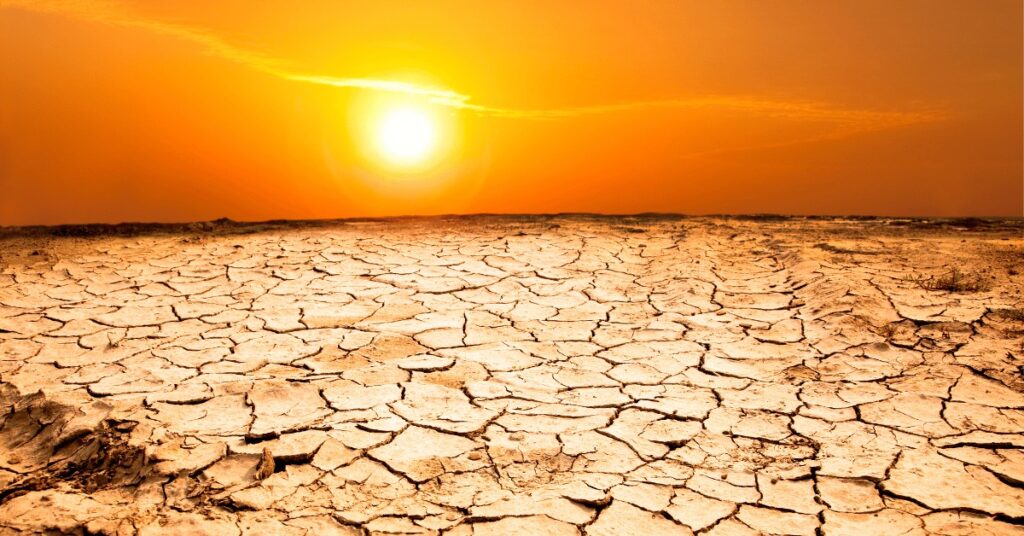
- Thermal Expansion: Hot weather can cause your drone’s materials to expand, leading to changes in shape and size that can affect its stability and control.
- Battery Life: High temperatures can cause your drone’s battery to drain faster, reducing your flight time and potentially leading to mid-air crashes.
- Motor Overheating: The motors in your drone generate a significant amount of heat when in use, and hot weather, this can cause them to overheat and fail, leading to a crash.
- Electronics: Extreme heat can also damage the electronic components of your drone, including the flight controller and sensors, causing them to malfunction or fail.
To avoid these issues, try to fly your drone during more excellent parts of the day, such as early morning or late afternoon, and monitor your battery temperature during the flight. Additionally, take breaks between flights to allow your drone to cool down and avoid flying in direct sunlight.
Are There Any Precautions You Should Take When Flying a Drone in Hot Weather?
It would help if you took several precautions to ensure a safe and successful flight.
Avoid Direct Sunlight:
Direct sunlight can quickly heat your drone and cause damage to the battery and other components. Try to fly in shaded areas or when the sun is not directly overhead.
Monitor Battery Temperature:
High temperatures can cause your drone’s battery to overheat and potentially malfunction. Keep an eye on the battery temperature during flight and take breaks to allow it to cool down if necessary.
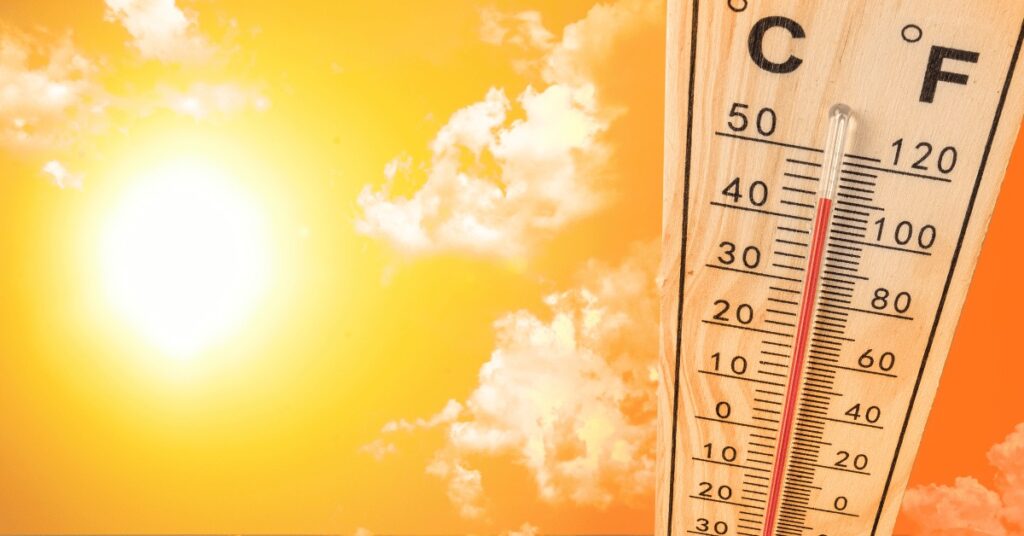
Stay Hydrated:
It’s easy to get caught up in the excitement of flying your drone, but remember to take care of yourself. Bring plenty of water and stay hydrated to avoid heat exhaustion.
Keep a Safe Distance:
Keeping a safe distance between your drone and other objects or people is essential in hot weather. The heat can cause your drone to behave unpredictably, so be sure to maintain control at all times.
Can High Temperatures Damage Your Drone’s Battery?
Your drone’s battery is the lifeblood of your equipment, and it’s essential to take care of it to ensure a safe and successful flight.
But can high temperatures damage your drone’s battery? The answer is yes. Let’s look closer at how hot weather can affect your drone’s battery and what you can do to prevent damage.
How Heat Affects Your Drone’s Battery:
When your drone’s battery gets hot, it can cause the chemicals inside to break down more quickly, leading to reduced capacity and performance. In extreme cases, high temperatures can cause your battery to swell or catch fire, putting you and your equipment at risk.
Preventing Battery Damage in Hot Weather
To prevent damage to your drone’s battery in hot weather, follow these tips:
- Keep your battery out of direct sunlight: Direct sunlight can cause your battery to heat up more quickly, so keep it in a shaded area if possible.
- Avoid charging your battery in hot weather: Charging it in hot weather can cause it to overheat, so wait until temperatures cool down before charging.
- Monitor your battery temperature: Most drones have a temperature sensor that will warn you if your battery is getting too hot. During the flight, watch this to ensure your battery stays within a safe temperature range.

- Take breaks to cool down your battery: If you’re flying your drone for an extended period in hot weather, let your battery cool down before continuing.
How Do You Protect Your Drone from Heat-Related Issues?
Protecting your drone from heat-related issues is crucial for safe and successful flights during hot weather. Here are some tips to keep your drone safe and calm:
Avoid Direct Sunlight: Direct sunlight can overheat your drone’s battery, so keep your drone in the shade as much as possible. If you need to set up your drone in direct sunlight, cover it with a sunshade or an umbrella to protect it from the sun’s heat.
Monitor Your Battery Temperature: High temperatures can cause your drone’s battery to overheat, potentially damaging it. Use a temperature sensor to monitor your drone’s battery temperature and ensure it stays within the safe range.
Take Breaks: Flying your drone continuously can cause it to overheat. Take breaks between flights to allow your drone to cool down. It will help prevent heat-related issues and prolong the life of your drone.
Use a Cooling System: Investing in a cooling system can help regulate your drone’s temperature during hot weather. A cooling pad or a fan can help circulate air around your drone and keep it cool.
What Are the Best Times of Day to Fly Your Drone in Hot Weather?
When flying your drone in hot weather, timing is critical. The best times of day to fly your drone are early in the morning or late in the evening when the temperatures are more relaxed. Here are some tips for maximizing your drone’s performance and minimizing the risks of overheating:
- Avoid flying in the middle of the day when the sun is at its highest, and the temperatures are hottest.
- Plan your flights for early morning or late evening when the temperatures are more relaxed.
- Take breaks between flights to allow your drone to cool down.
- Keep your batteries in the shade and monitor their temperature regularly.
- Consider investing in a cooling pad or fan to help regulate your drone’s temperature.
Following these simple tips, you can safely and successfully fly your drone in hot weather conditions. Remember to prioritize the safety of yourself and those around you, and take precautions to protect your equipment from the heat.
READ MORE: How to charge Mavic 3 battery?
What Should You Do if Your Drone Overheats During Flight?
If your drone overheats during a flight, don’t panic. Here’s what you can do to ensure a safe landing:
Simple Answer: Land your drone immediately
Bring Your Drone to a Safe Landing Spot
If you notice that your drone is overheating, your priority should be to land it in a safe location as quickly as possible. Choose a spot with a clear landing area and avoid any obstacles interfering with your landing.
Turn Off Your Drone and Let It Cool Down
Once you have landed your drone safely, turn off the motors and let the device cool down. Find a shaded area or bring an umbrella to provide shade if necessary. Avoid touching the drone during this time to prevent any further damage.
Check the Battery and Internal Components
After the drone has cooled down, please remove the battery and inspect it for any signs of swelling or damage. If the battery is damaged, replace it with a new one. Check the internal components for any signs of heat damage or melting.
Wait Before Flying Again
Before flying your drone again, ensure the temperature has dropped safely. Additionally, give your drone time to cool down completely before turning it back on and resuming your flight.
Remember, taking precautions to prevent your drone from overheating in the first place is always the best option. Keep an eye on the temperature of your battery and motors, and avoid flying in direct sunlight for prolonged periods.
Are There Any Legal Restrictions on Flying Drones in Hot Weather?
As a drone pilot, it’s essential to understand the legal restrictions on flying your drone in hot weather.
Overview of Regulations
The Federal Aviation Administration (FAA) regulates the use of drones in the United States and provides guidelines for safe and legal operations. These guidelines include restrictions on where and when you can fly your drone, registration, and pilot certification requirements.
Restrictions on Hot Weather Flying
While there are no specific regulations regarding flying drones in hot weather, there are restrictions on flying in certain airspace and over certain areas, such as airports and national parks. Additionally, some states and cities may have regulations on drone operation.
Tips for Compliance
To ensure compliance with FAA regulations when flying your drone in hot weather, check the airspace restrictions in your area, register your drone with the FAA, and obtain any necessary pilot certifications.
It’s also important to monitor weather conditions and avoid flying in extreme heat or direct sunlight to protect your drone and ensure a safe flight.
How Can You Cool Your Drone Down Between Flights?
After flying your drone in hot weather, cooling it down before your next flight is essential. Here are some ways to help your drone cool down quickly and efficiently:
- Give It Some Shade: Find a shady spot and place your drone there. It will help protect it from direct sunlight and aid in cooling it down.
- Use a Cooling Pad: Cooling pads are an excellent way to help your drone cool down quickly. These pads contain a heat-absorbing material that can reduce the temperature of your drone.
- Remove the Battery: After landing your drone, remove the battery and let it cool down separately. It will prevent the battery from overheating and reduce the overall temperature of your drone.
- Use a Fan: You can use a fan to cool down your drone quickly. Aim the fan at your drone and let it run for a few minutes.
These simple steps can help your drone cool quickly and efficiently between flights. It will ensure your drone’s optimal performance and prevent any damage from overheating.
READ MORE: What to do when drone crashes?
What Are the Risks of Flying a Drone in Hot Weather?
When flying your drone in hot weather, there are several risks you need to be aware of. Here are some potential subheadings to consider:
Heat Damage
Excessive heat can cause damage to your drone’s battery, circuitry, and other components, leading to malfunctions during flight or even permanent damage to your equipment.
Performance Issues
High temperatures can also affect your drone’s performance, making it more difficult to control and maneuver. Flying in crowded areas or near other people or objects can be hazardous.
Overheating
If your drone becomes overheated during flight, it can shut down or crash unexpectedly, damaging your equipment and potential safety hazards for those around you.
Battery Life
Flying in hot weather can also reduce your drone’s battery life, making capturing the necessary footage more challenging. It can be particularly frustrating if you’re on a tight schedule or trying to capture time-sensitive material.
Taking precautions when flying your drone in hot weather is essential to avoid these risks. It might include choosing more excellent times of day to fly, monitoring your battery temperature, and taking breaks to allow your drone to cool down.
By being aware of the risks and taking steps to protect your equipment, you can safely enjoy the thrill of flying your drone in even the hottest weather.
Important FAQs
Can you fly a drone in hot weather?
How does hot weather affect drone flight?
What steps should I take to protect my drone when flying in hot weather?
Can flying a drone in hot weather cause permanent damage to the equipment?
What are some signs that my drone is overheating during flight?
Are there any specific types of drones better suited for hot weather flying?
Final Thoughts
In conclusion, flying your drone in hot weather can be a fun and rewarding experience, but it’s essential to be aware of the risks and take appropriate precautions.
Protecting your equipment from heat damage, monitoring your drone’s performance, and taking breaks when necessary allows you to enjoy safe and successful flights in even the hottest weather. Remember always to prioritize safety and responsible flying practices.
If you found this article helpful, please share it with your fellow drone enthusiasts and comment below with your thoughts or any additional tips for flying in hot weather. Let’s continue to promote safe and responsible drone flying together.
Want to Learn More:
How to Charge Mavic 3 Battery?
“Ready to power up your Mavic 3 adventure? ⚡ Discover the quick and easy way to charge your Mavic 3 battery in our step-by-step guide. Let’s get flying!”



